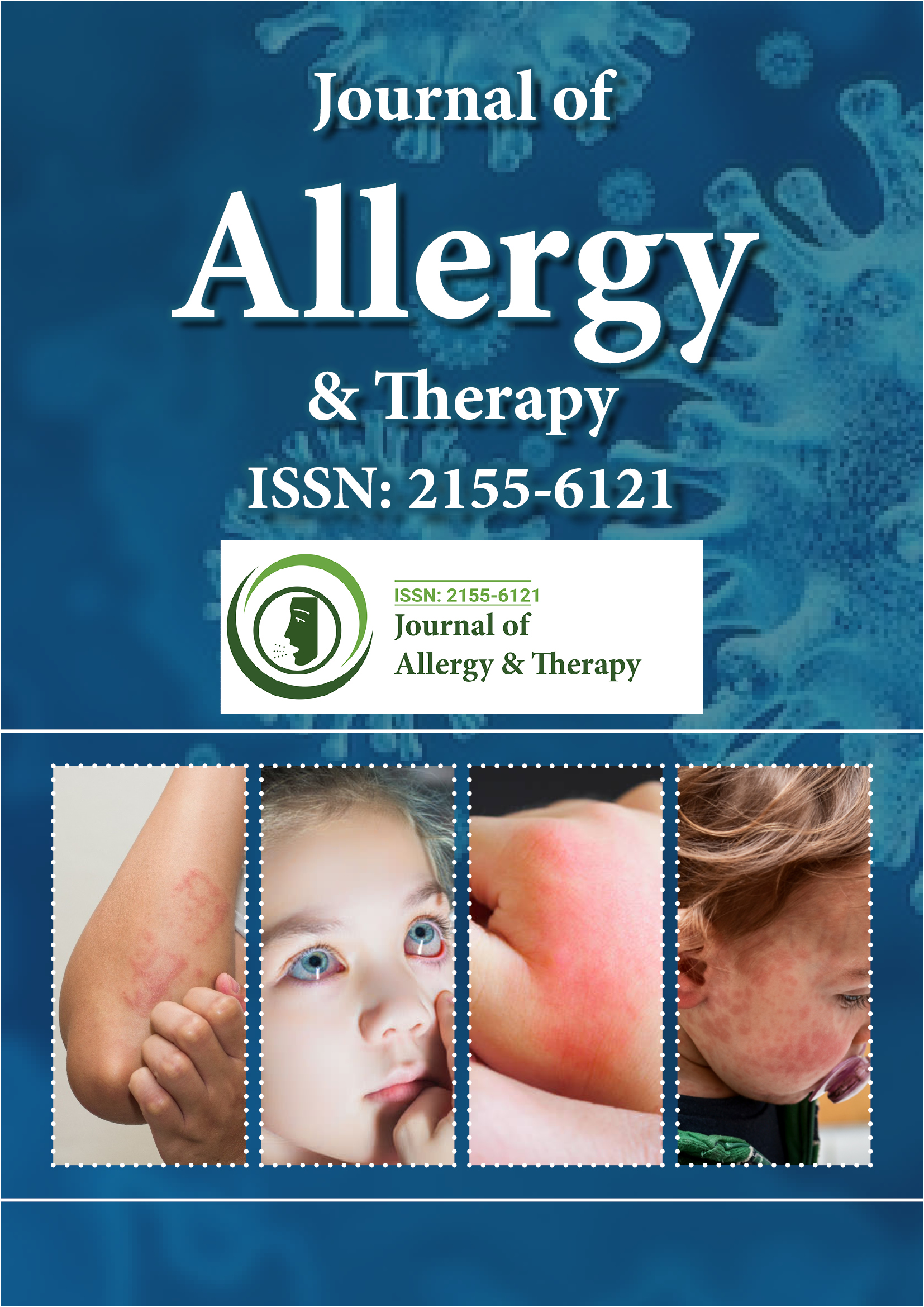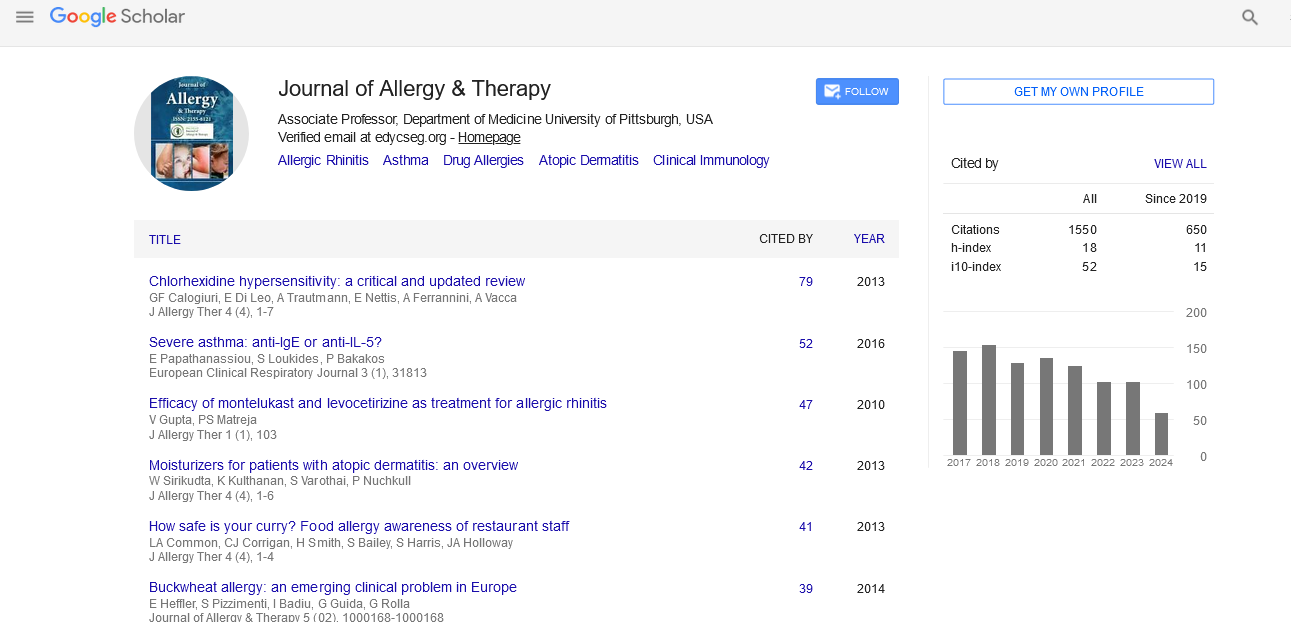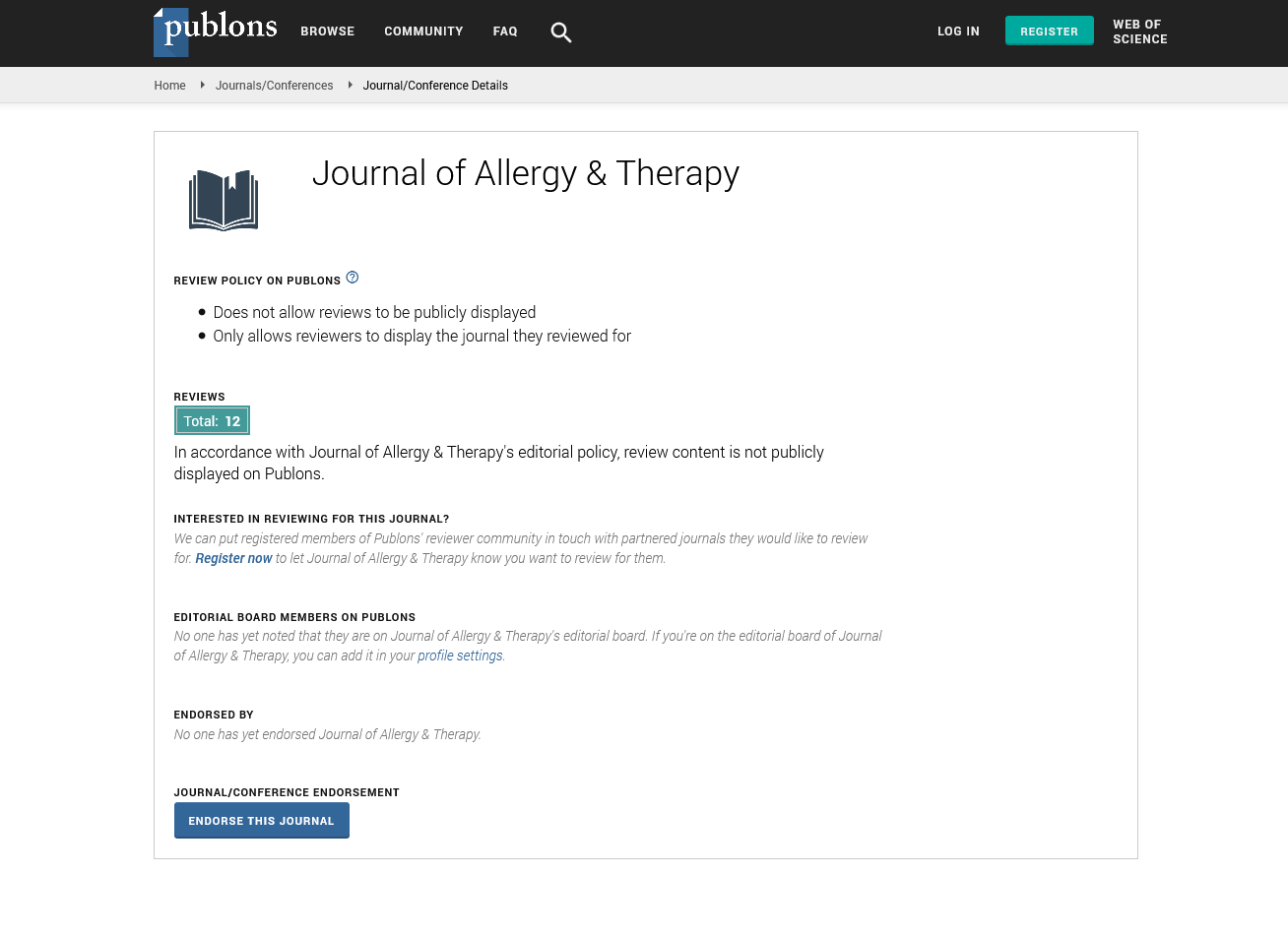Indexed In
- Academic Journals Database
- Open J Gate
- Genamics JournalSeek
- Academic Keys
- JournalTOCs
- China National Knowledge Infrastructure (CNKI)
- Ulrich's Periodicals Directory
- Electronic Journals Library
- RefSeek
- Hamdard University
- EBSCO A-Z
- OCLC- WorldCat
- SWB online catalog
- Virtual Library of Biology (vifabio)
- Publons
- Geneva Foundation for Medical Education and Research
- Euro Pub
- Google Scholar
Useful Links
Share This Page
Journal Flyer

Open Access Journals
- Agri and Aquaculture
- Biochemistry
- Bioinformatics & Systems Biology
- Business & Management
- Chemistry
- Clinical Sciences
- Engineering
- Food & Nutrition
- General Science
- Genetics & Molecular Biology
- Immunology & Microbiology
- Medical Sciences
- Neuroscience & Psychology
- Nursing & Health Care
- Pharmaceutical Sciences
Commentary - (2023) Volume 14, Issue 6
T-Cell Activation of Allergic Reactions: Examining its Functioning Mechanisms
Batac Merrill*Received: 27-Nov-2023, Manuscript No. JAT-23-24385; Editor assigned: 30-Nov-2023, Pre QC No. JAT-23-24385 (PQ); Reviewed: 14-Dec-2023, QC No. JAT-23-24385; Revised: 21-Dec-2023, Manuscript No. JAT-23-24385 (R); Published: 30-Dec-2023, DOI: 10.35248/2155-6121.23.14.370
Description
T-cell activation plays a major role in allergic responses, contributing to the immune system's overreaction to harmless substances. Allergies are hypersensitive reactions to allergens, which are typically harmless substances like pollen, dust mites, or certain foods. Understanding the specific mechanisms of T-cell activation in the context of allergies is essential for developing targeted therapies and interventions.
Allergen recognition and presentation
In allergic responses, allergens are recognized by Antigen- Presenting Cells (APCs), such as dendritic cells, macrophages, or B cells. These APCs process allergens and present specific peptides on their cell surface bound to Major Histocompatibility Complex (MHC) molecules. T-cell activation in allergies often involves CD4+ T cells, also known as helper T cells.
T-Cell Receptor (TCR) in allergic responses
The interaction between the T-Cell Receptor (TCR) and the allergen-MHC complex initiates the cascade of events leading to T-cell activation. Unlike the immune responses to pathogens, allergic reactions are characterized by an aberrant response to non-threatening substances. This hypersensitivity arises from a misguided recognition of allergens as dangerous, leading to an inappropriate immune response.
Co-stimulation and allergic sensitization
Co-stimulatory signals, including molecules like CD28, contribute to T-cell activation during allergic sensitization. Allergic individuals often undergo a process called sensitization, where repeated exposure to an allergen primes the immune system to increased exaggerated responses upon subsequent encounters. Costimulatory signals are major checkpoints in ensuring that the immune response is appropriately regulated.
Signal transduction and allergic inflammation
Activated T cells release pro-inflammatory cytokines, such as Interleukin-4 (IL-4), Interleukin-5 (IL-5), and Interleukin-13 (IL-13), which drive allergic inflammation. These cytokines play a significant role in recruiting and activating other immune cells, such as eosinophils and mast cells, contributing to the basic symptoms of allergies, including inflammation, mucus production, and tissue damage.
Differentiation and effector functions in allergic reactions
Activated CD4+ T cells differentiate into effector T-helper 2 (Th2) cells, which are central to allergic responses. Th2 cells orchestrate the production of IgE antibodies by B cells and stimulate the activation of mast cells and eosinophils. IgE antibodies, in turn, bind to mast cells and trigger the release of histamine and other mediators upon allergen re-exposure, leading to the characteristic symptoms of allergies, such as itching, sneezing, and respiratory distress.
Regulation and tolerance in allergic responses
In healthy individuals, regulatory T cells (Tregs) play a major role in maintaining immune tolerance and preventing excessive responses to harmless substances. In allergic individuals, there is often an imbalance in the regulatory mechanisms, contributing to the development and persistence of allergic reactions. Understanding how Tregs function in the context of allergies is an area of ongoing research.
Conclusion
T-cell activation in allergic responses is a multifaceted process involving the recognition of allergens, co-stimulation, signal transduction, and effector functions. Analysing the specific mechanisms underlying T-cell activation in allergies provides insights into the development of targeted therapies that can modulate the immune response and alleviate allergic symptoms. As research in immunology progresses, a deeper understanding of T-cell involvement in allergies will lead to innovative approaches for allergy prevention and treatment.
Citation: Merrill B (2023) T-Cell Activation of Allergic Reactions: Examining its Functioning Mechanismss. J Allergy Ther. 14:370.
Copyright: © 2023 Merrill B. This is an open access article distributed under the terms of the Creative Commons Attribution License, which permits unrestricted use, distribution, and reproduction in any medium, provided the original author and source are credited.


